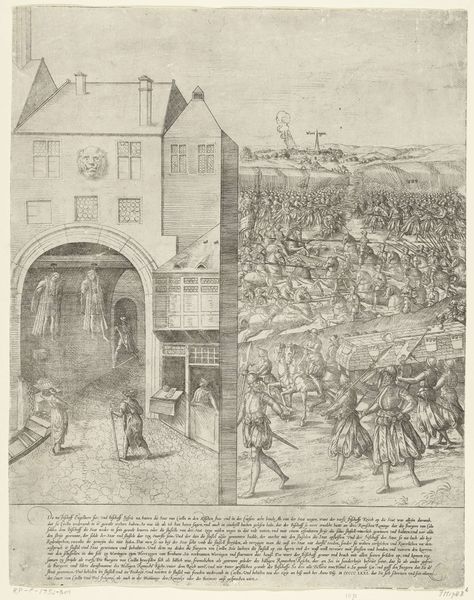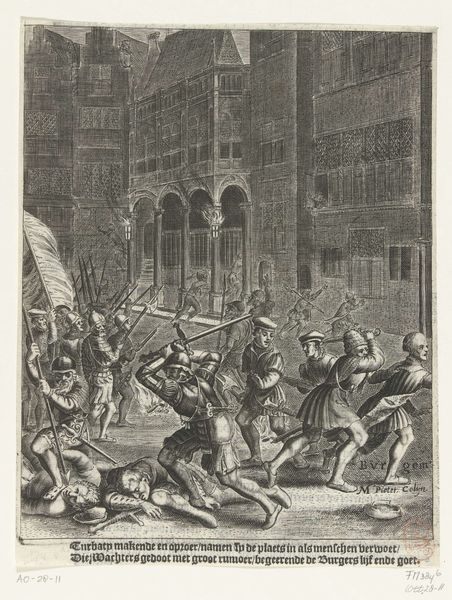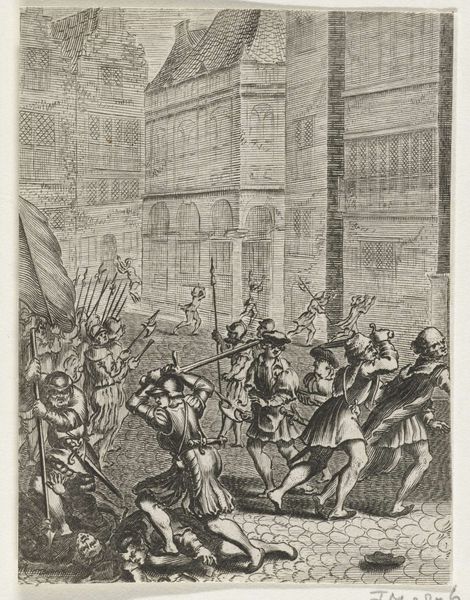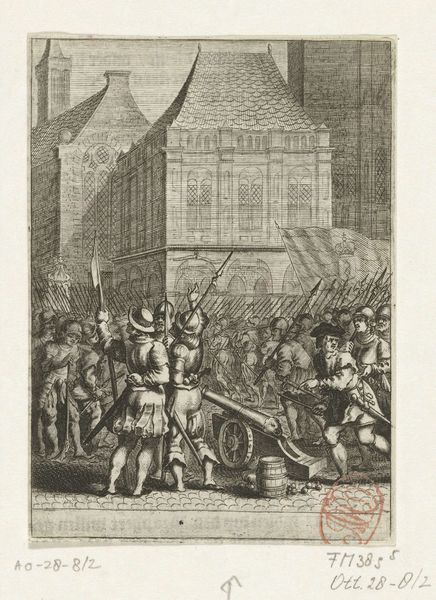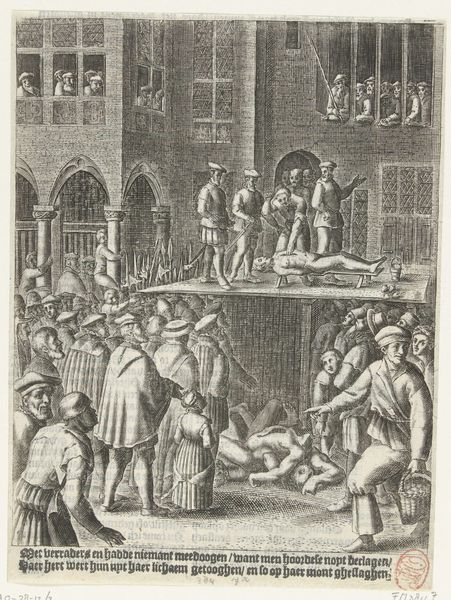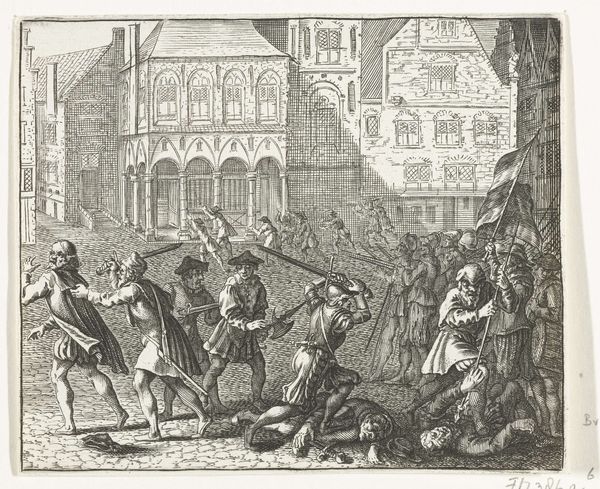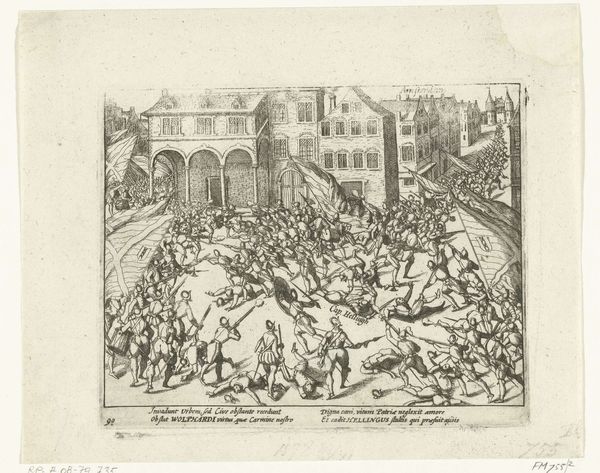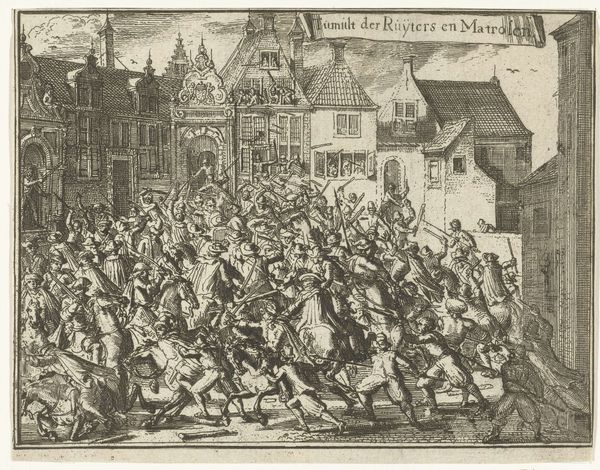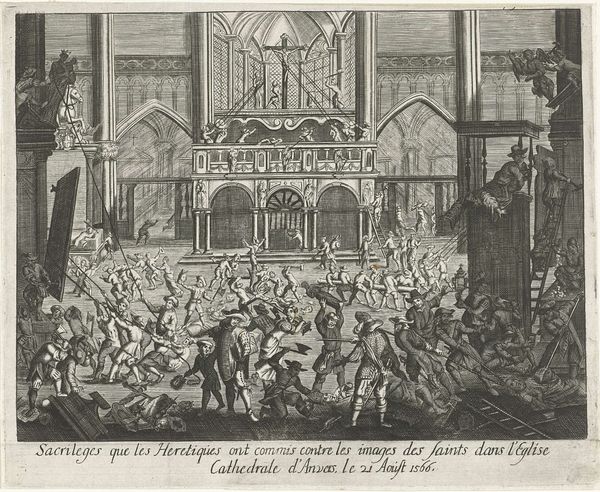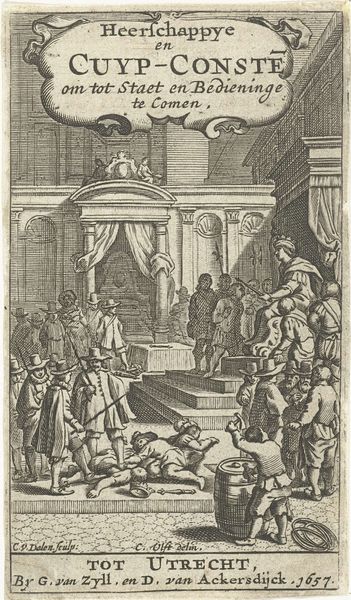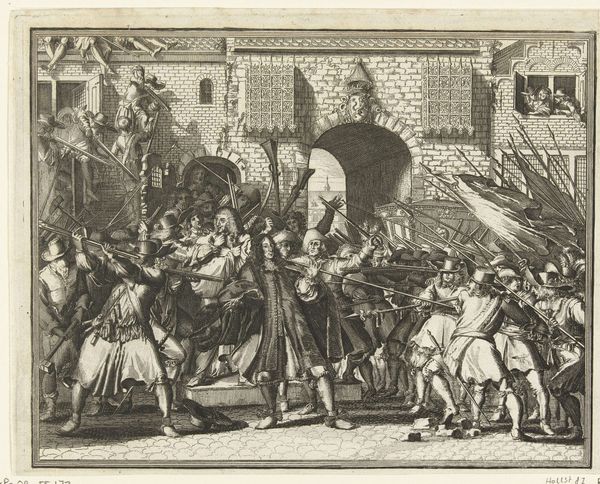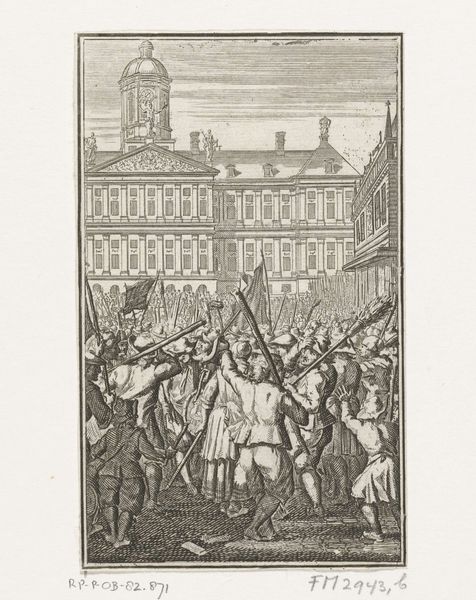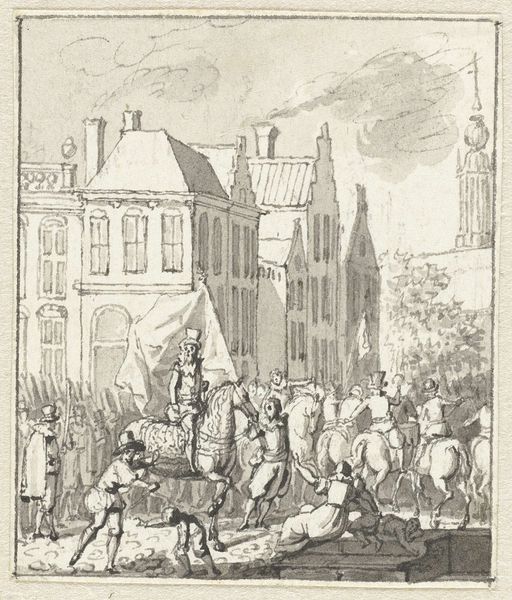
print, engraving
#
baroque
# print
#
old engraving style
#
genre-painting
#
history-painting
#
engraving
Dimensions: height 212 mm, width 171 mm
Copyright: Rijks Museum: Open Domain
Editor: This engraving, titled "Aanval op de wederdopers in het stadhuis, 1535," made between 1612 and 1614, depicts a siege with a lot of spears pointed towards what looks like a governmental building. The scene feels chaotic, even ruthless. What can you tell me about this work? Curator: It’s a potent image, isn’t it? I see a deliberate staging of power, masked as historical record. This piece screams of the Baroque era and its grandiosity. It seems to represent more than just the siege of 1535, what do you think it says about power? Editor: Well, the overwhelming display of armed figures certainly suggests a clear power dynamic, with one group imposing its will on another, quite literally attacking. I'm not sure I would read a purely gendered message, but the attack on the state building clearly conveys the intent to undermine the existing political and societal structures. I am more interested in what may be driving such intolerance? Curator: Precisely! And it's crucial to ask, what narrative is being constructed? Is it a justification of authority through violence, or is it a critique? We need to consider how religion played a role in power structures, particularly the suppression and persecution of marginalized religious groups. The figures at the forefront embody, or challenge ideas surrounding authority, class, religion, race and privilege at the time. Editor: So, this piece, beyond illustrating a historical event, offers a glimpse into the anxieties and power dynamics of the 17th century through a depiction of an earlier event? Curator: Exactly. We should constantly ask, whose perspective is privileged here, and what message are they trying to spread, or perhaps what reaction might be sought? This piece invites us to reflect on the way historical events are represented to justify current attitudes to issues surrounding identity and otherness, and how that continues today. Editor: It's really helpful to think about the intent behind these kinds of historical depictions. Now, seeing it from this point of view makes me wonder how the image might serve to legitimize certain oppressive beliefs that existed then... and perhaps even continue today. Thank you for helping me contextualize this!
Comments
No comments
Be the first to comment and join the conversation on the ultimate creative platform.
